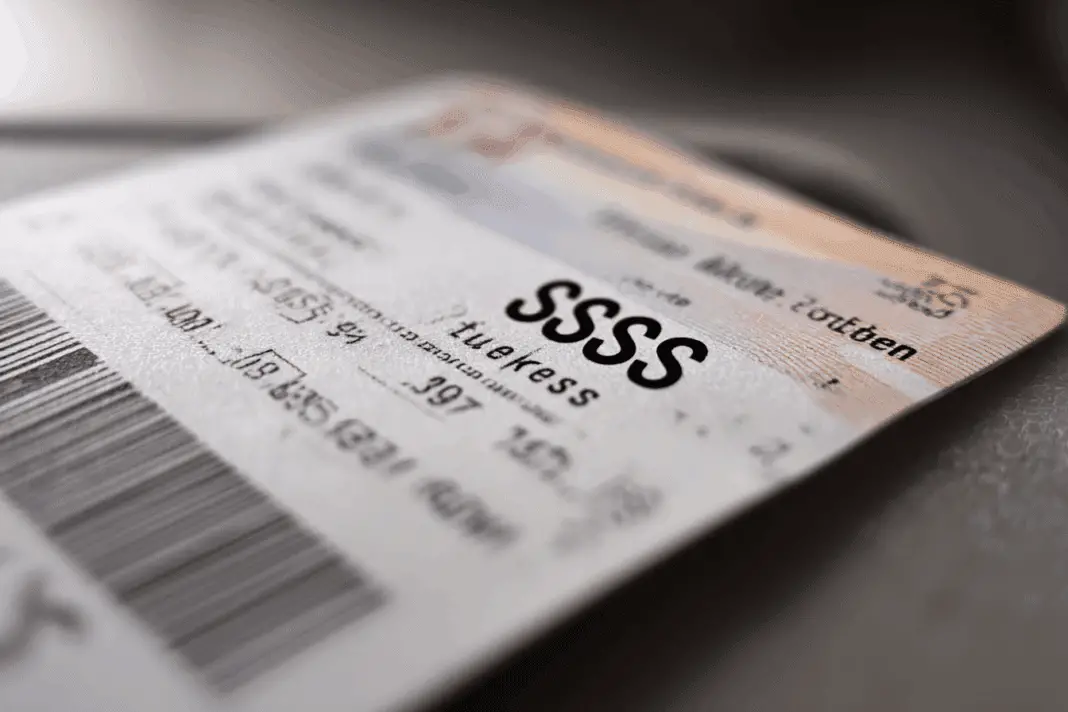Picture this: you’re rushing through the airport, juggling your coffee and carry-on bag, when you notice four bold letters printed on your boarding pass that you’ve never seen before. Those letters are SSSS, and they’re about to turn your routine flight into anything but ordinary. While these four simple letters might look harmless enough, seasoned travelers know them as the dreaded code that can add serious delays to your travel plans and subject you to extensive additional screening procedures.
Those four letters stand for secondary security screening selection
When SSSS appears on your boarding pass, it means you’ve been selected for Secondary Security Screening Selection by the Department of Homeland Security. This isn’t the same as being randomly pulled aside at a regular TSA checkpoint for an extra pat-down or bag search. Instead, it’s a much more comprehensive screening process that happens specifically because your name has been flagged in the system for additional scrutiny before you can board your flight.
Travel experts call this designation the kiss of death because there’s absolutely no way to avoid the extensive screening process once those letters appear on your ticket. Unlike regular security screening where you might breeze through TSA PreCheck, having SSSS on your boarding pass means you’ll lose all those privileges and face a much longer, more intensive process regardless of your trusted traveler status.
You might not be able to check in online beforehand
One of the first signs that you might be facing the SSSS screening is trouble checking in for your flight online. Many passengers report getting error messages or being unable to complete the online check-in process when they’ve been flagged for additional screening. The system might repeatedly reject your attempts to check in, or you might get a generic error message without any explanation about what’s wrong.
If you can’t check in online, you’ll need to visit a ticket counter or kiosk at the airport instead. Even then, the process might not be straightforward – the kiosk could require assistance from an airline representative who needs to swipe their badge and enter a special code. Some travelers are specifically instructed to check in at the ticketing desk rather than using online or kiosk options, though the ticket agent typically won’t explain why this restriction exists.
The letters appear in specific locations on your ticket
Once you have your boarding pass in hand, look carefully at the upper left corner and lower right corners of your ticket. The SSSS designation will be printed in bold letters in these locations, though they’re surprisingly easy to miss if you’re not looking for them. Many travelers focus on checking their gate number, departure time, or whether their TSA PreCheck status is listed, completely overlooking these four crucial letters.
The placement of these letters isn’t accidental – they’re positioned where airport security personnel and gate agents can easily spot them during the boarding process. International travelers might be especially likely to miss the SSSS marking since they’re not typically looking for TSA PreCheck status on their tickets. Smart travelers make it a habit to thoroughly review their entire boarding pass immediately after receiving it, regardless of whether they’re flying domestically or internationally.
Several factors can trigger this additional screening designation
While airlines claim the SSSS selection process is random, certain travel patterns and booking behaviors make you more likely to be flagged. Last-minute flight bookings, one-way international tickets, and paying for flights with cash all increase your chances of being selected for additional screening. Travelers visiting countries that the US government considers high-risk destinations also face higher odds of receiving the SSSS designation on their boarding passes.
Your name itself can also trigger the screening if it’s similar to someone on a government watch list or no-fly list. Hyphenated names, extremely common names, or names that match certain patterns can all result in false positive matches that lead to SSSS screening. Even factors like unusual travel patterns – such as flying into one country and departing from another – can raise red flags in the system and result in your selection for enhanced security measures.
Domestic flights mean extra screening at the TSA checkpoint
When flying domestically within the United States, your SSSS screening will take place at the regular TSA security checkpoint, but it will be far from routine. TSA agents will identify you as a “quad” – their internal term for SSSS passengers – and direct you through a much more intensive screening process than other travelers. You’ll be required to go through the full-body scanner rather than just walking through a metal detector, regardless of your TSA PreCheck status.
The screening process doesn’t stop there, though. You’ll receive a thorough pat-down from a TSA agent of the same gender, and you’ll need to completely empty your carry-on bags so every item can be individually inspected. All electronic devices must be powered on to prove they’re functional, and TSA agents will swab your belongings, shoes, and electronics with special chemicals that detect explosive residue. This entire process can add 30 minutes or more to your time at the security checkpoint.
International flights involve screening at the departure gate
International travel with SSSS designation works differently than domestic flights, with the additional screening taking place at your departure gate rather than at the main security checkpoint. You’ll go through the regular airport security process first, then wait at your gate like any other passenger until your name is called over the intercom. A gate agent will then escort you away from the general waiting area to a separate screening location.
At this secondary screening area, you’ll join other selected passengers in a queue where security personnel have set up makeshift stations. The process involves removing all electronics from carry-on bags, taking off shoes and belts, and having everything swabbed for explosive residue. Once the screening is complete, you’ll be directed straight to board the aircraft without returning to the gate waiting area, which means you won’t be able to rejoin your travel companions until you’re on the plane.
TSA PreCheck and Global Entry won’t help you avoid it
Many travelers assume their trusted traveler status will protect them from additional screening, but SSSS designation overrides all expedited security programs. Even if you have TSA PreCheck, Global Entry, or other trusted traveler credentials, you’ll still need to undergo the full secondary screening process if those four letters appear on your boarding pass. Your expedited security privileges are essentially suspended for that particular flight.
This can be particularly frustrating for frequent travelers who have invested time and money in trusted traveler programs specifically to avoid lengthy security lines and invasive screening procedures. The fact that these programs can be overridden by SSSS designation highlights just how seriously the Department of Homeland Security takes this additional screening process. Some travelers report feeling that their trusted traveler fees were wasted when they’re subjected to SSSS screening despite their background checks and security clearances.
Getting off the SSSS list requires filing for redress
If you repeatedly receive SSSS designation on your boarding passes, you can apply for relief through the Department of Homeland Security’s redress program. This process involves submitting detailed personal information, including your full travel history, identification documents, and an explanation of why you believe you’ve been incorrectly flagged for additional screening. The redress application is free, but it requires significant time and documentation to complete properly.
The redress process can take several months to complete, and there’s no guarantee that your application will be approved or that you’ll receive an explanation for why you were flagged in the first place. However, successful applicants receive a redress control number that can help prevent future false positive matches in the screening system. Travel experts recommend documenting every instance of SSSS screening, including dates, airports, and flight numbers, to support your redress application with concrete evidence of the problem.
Plan extra time and bring patience for your travel day
If you spot SSSS on your boarding pass, the most important thing you can do is allow extra time for your airport experience. Domestic flights require at least an additional 30-45 minutes for the enhanced screening process, while international flights might need even more buffer time depending on the airport and staffing levels. Rushing through this process will only increase your stress level and potentially cause you to miss your flight entirely.
Some airports allow SSSS passengers to use priority security lines to avoid waiting in regular queues only to be pulled aside for additional screening at the front. It never hurts to politely ask TSA agents if this option is available, though success depends on staffing levels and how busy the checkpoint is at the time. Remember that the security personnel are just doing their jobs, and maintaining a cooperative attitude will make the process smoother for everyone involved.
While finding SSSS on your boarding pass is never pleasant, understanding what it means and what to expect can help reduce the stress and confusion of the experience. The additional screening process is designed as a security measure, even though it can feel invasive and time-consuming for travelers who pose no actual threat. With proper preparation and realistic expectations about timing, you can navigate the SSSS screening process and still make it to your destination as planned.

